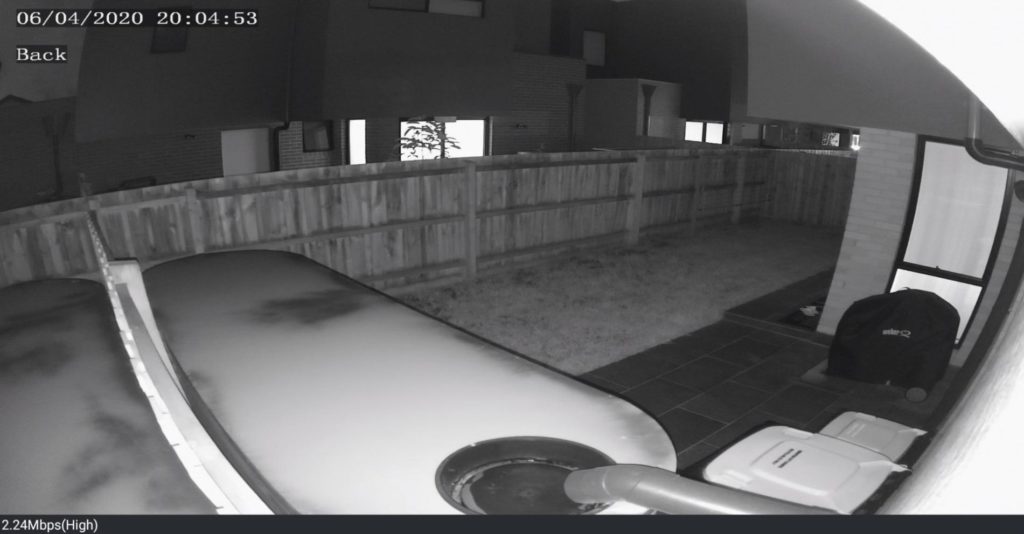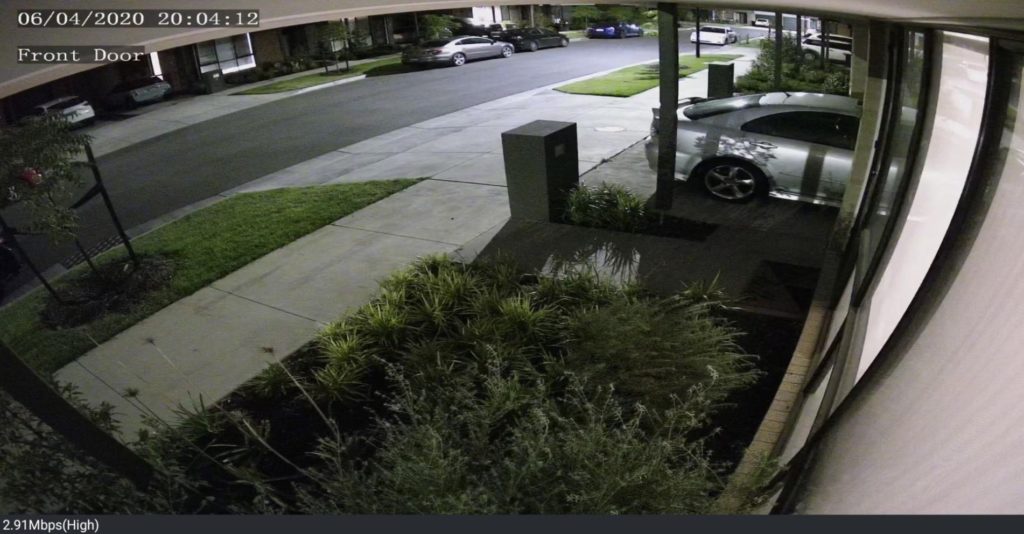Infrared Cameras
Infrared light is light that we cannot see ourselves but rather feel as heat. As the prefix ‘infra’ means after, the term ‘infrared‘ refers to the idea that we cannot see light with a wavelength ‘after’ (or longer) than that of the colour red.
IR cameras use this invisible light to ‘see’ and are often referred to as ‘night vision’ cameras. However, this is a common misconception as most IR CCTV cameras have inbuilt infrared technology, allowing footage to be captured during the day and at night.

Example of infrared camera footage
In low-light, these cameras operate using built-in IR LEDs, which emit infrared light. This ‘invisible light’ is then reflected by objects and collected by the camera lens. As such, the number of built in IR LEDS in a CCTV camera influences the camera’s night vision range, and will also impact the resolution of your footage. Many CCTV cameras contain up to 24 LEDs.
When light is available the camera will usually give you a coloured picture, however, as it gets darker the IR will switch on and the camera will begin to record in black and white using the light generated by the IR.
IR technology only allows for black and white footage and has limitations on the range of distance that can be captured (generally up to 50M). It can also function poorly if there are a mix of close and far objects in the camera’s field of vision.
Starlight IP Cameras
Starlight IP cameras, on the other hand, have special sensors and software that provide improved night vision in low light conditions, without the use of IR LEDs. Instead these cameras use very low levels of ambient light to create a colour image. Some products are even able to generate a clear image at light levels as low as 0.005 lux (close to complete darkness). However, the limitation of Starlight Technology is that it requires this ambient light to produce an image (i.e. a street light a couple of doors down or some moonlight) and therefore will not work in all circumstances.

Example of starlight IP camera footage
When choosing a Starlight camera, you can determine the quality of the camera’s night vision by it’s lux. The rule of thumb is, the lower the lux, the better the night vision. For example, a zero lux camera will still be able to see in complete darkness, whereas a 1 lux camera would need to be used where a sufficient amount of light is available at all times.
Lux Rating Chart
Here at Jim’s Security we have a wide range of CCTV packages starting at $1495 and offer professional installation of customer supplied CCTV systems from just $150 per camera. To find out more, visit our CCTV & Camera Systems page. Or to learn more about the different features and components of CCTV systems and security cameras take a look at our CCTV and Security Camera Buyers Guide.
We are also readily available to help answer any questions or queries you may have about finding a security system tailored to the specific requirements of your home or business and lifestyle. Contact us on 131 546 or book a free onsite quote online.


